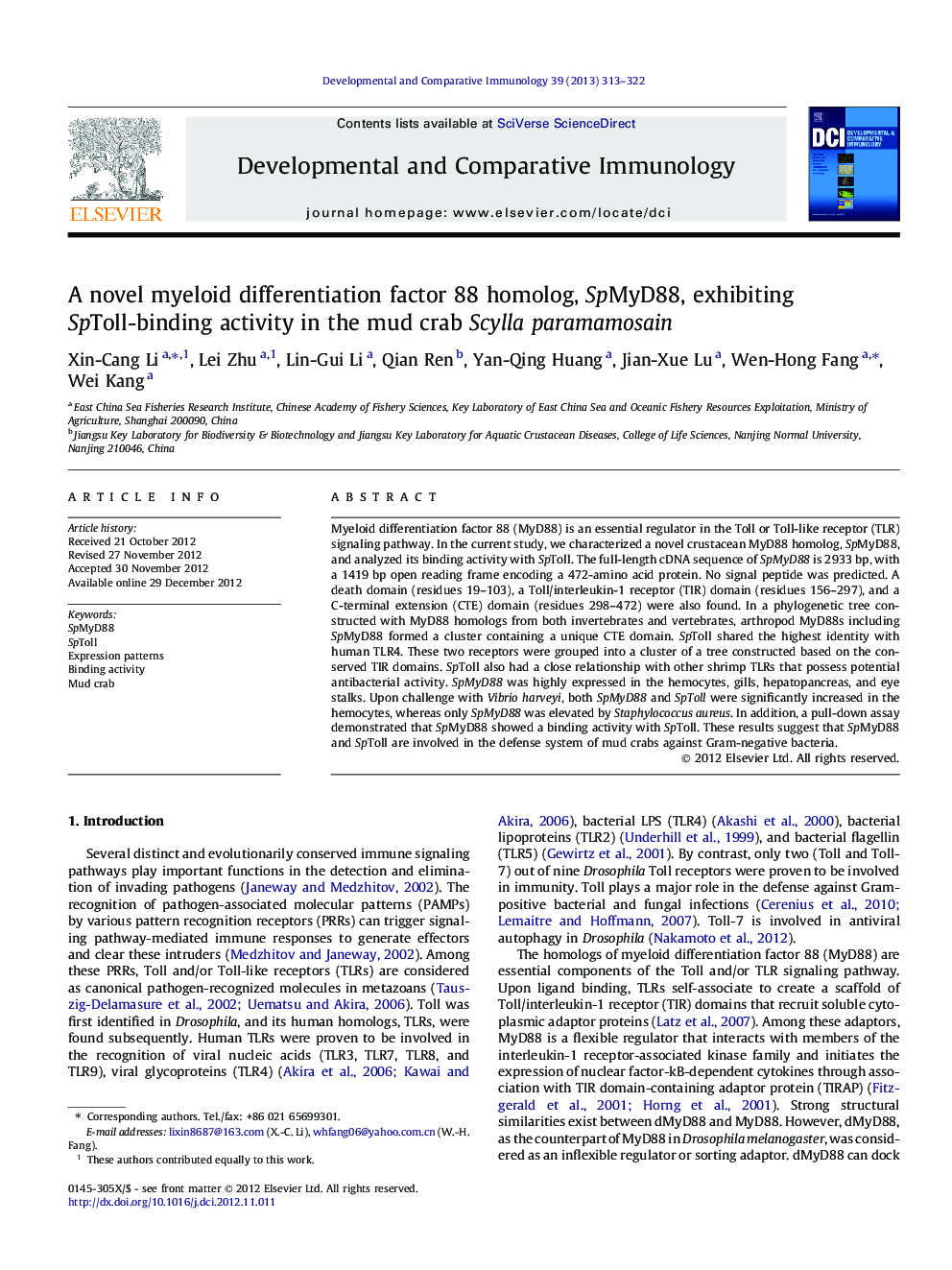| Article ID | Journal | Published Year | Pages | File Type |
|---|---|---|---|---|
| 2429306 | Developmental & Comparative Immunology | 2013 | 10 Pages |
Myeloid differentiation factor 88 (MyD88) is an essential regulator in the Toll or Toll-like receptor (TLR) signaling pathway. In the current study, we characterized a novel crustacean MyD88 homolog, SpMyD88, and analyzed its binding activity with SpToll. The full-length cDNA sequence of SpMyD88 is 2933 bp, with a 1419 bp open reading frame encoding a 472-amino acid protein. No signal peptide was predicted. A death domain (residues 19–103), a Toll/interleukin-1 receptor (TIR) domain (residues 156–297), and a C-terminal extension (CTE) domain (residues 298–472) were also found. In a phylogenetic tree constructed with MyD88 homologs from both invertebrates and vertebrates, arthropod MyD88s including SpMyD88 formed a cluster containing a unique CTE domain. SpToll shared the highest identity with human TLR4. These two receptors were grouped into a cluster of a tree constructed based on the conserved TIR domains. SpToll also had a close relationship with other shrimp TLRs that possess potential antibacterial activity. SpMyD88 was highly expressed in the hemocytes, gills, hepatopancreas, and eye stalks. Upon challenge with Vibrio harveyi, both SpMyD88 and SpToll were significantly increased in the hemocytes, whereas only SpMyD88 was elevated by Staphylococcus aureus. In addition, a pull-down assay demonstrated that SpMyD88 showed a binding activity with SpToll. These results suggest that SpMyD88 and SpToll are involved in the defense system of mud crabs against Gram-negative bacteria.
► We characterized a novel crustacean MyD88 homolog, SpMyD88, from the mud crab. ► Both SpMyD88 and the previously reported SpToll were up-regulated by Vibrio harveyi. ► SpToll having a closer evolutionary relationship to human TLR4 could bind to SpMyD88. ► Similar to Drosophila dMyD88, SpMyD88 also contained a C-terminal extension domain. ► SpMyD88 cooperating with SpToll participated in defense against Gram-negative bacteria.
